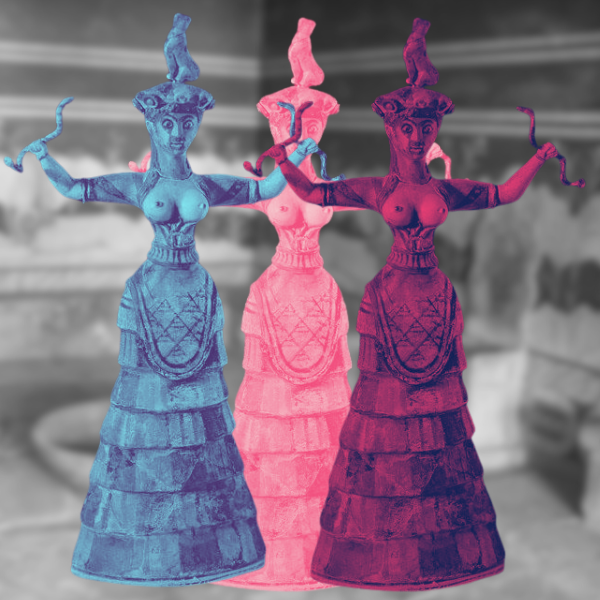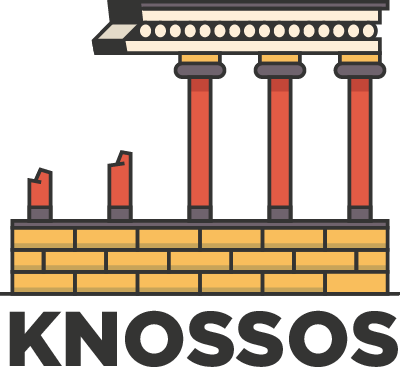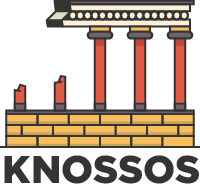
The Power of Women in Minoan Civilization
Table of Contents
The Minoan civilization, which flourished on the island of Crete in the Bronze Age, was known for its unique aspects such as maritime trade, sophisticated art, and advanced urban planning. But what is less well-known is the prominent place of women in Minoan society and religion.
In this article, we will delve into the empowering role of women in Minoan society and highlight the intricate connections between female power, Minoan art, and religion.

Women in Minoan Society
In ancient societies, women were usually relegated to domestic and reproductive roles, with few opportunities for education, politics, or leadership. However, the Minoan civilization presented a contrasting perspective. Women in Minoan society had a more prominent role in public life, as evidenced by their participation in religious and cultural events, their inclusion in artwork, and their high-ranking positions in the palace bureaucracy.
For instance, the famous mythological figure of Ariadne was considered the high priestess of the Minoan religion, and women enjoyed social and economic independence and played a critical role in the island’s trading system. Scholars have debated the reasons for women’s empowerment in Minoan society, with some attributing it to genetic or environmental factors, while others emphasize the cultural or religious influences.
The Snake Goddesses and Minoan Religion
Snake Goddess figurines, dating back to the Minoan period, are some of the most iconic artifacts of this civilization.
These figurines, which depict a woman holding one or two snakes in her hands, have long been associated with the religious and political power of Minoan women.
Some scholars suggest that these figurines symbolize the cult of the Great Goddess, who was honored in Crete as a goddess of fertility, nature, and rebirth.
Other experts argue that the snakes symbolize women’s role as healers and midwives, and the woman’s posture and attire suggest a connection to female ritualistic practices.
The Snake Goddesses had a profound impact on Minoan art, inspiring painters, potters, weavers, and sculptors, and reflecting the spiritual essence of the Minoan women.
Archaeological Evidence of Female Leadership
Archaeological excavations have unearthed compelling evidence, such as frescoes, seals, and administrative records, that attest to the influential roles women held in Minoan society. Notable among these findings are the vibrant frescoes from the Palace of Knossos, depicting women in authoritative poses, often surrounded by symbols of religious and political power.
Seals and rings engraved with female figures wielding scepters or participating in sacred rituals further corroborate the significant status of women.
These artifacts, coupled with administrative tablets suggesting women’s involvement in the governance and economic management of the society, paint a vivid picture of a civilization where female leadership was not only accepted but revered.
Case studies of mythological figures like the priestess-queen Ariadne, alongside real historical personages, highlight the deep-rooted respect and power accorded to women in Minoan culture, challenging modern perceptions of ancient gender roles.
The Minoan Spirit and Healing Traditions
The Minoan spirit is a term coined by archaeologists and historians to describe the unique worldview and values of the Minoan civilization.
This spirit was reflected in the way the Minoans perceived themselves and their surroundings, seeing themselves as a peaceful, harmonious community that values nature and feminine power.
One manifestation of this spirit is in the Minoan healing traditions, which were centered around midwifery and pregnancy care. Minoan women were known to have a deep knowledge of herbs, remedies, and healthy food, and the profession of the midwife was highly respected.
Some scholars even suggest that the Minoan midwives had a connection to the goddess Eileithyia, the patron saint of childbirth and fertility.
Jewelry and Female Identity in Minoan Society
Jewelry played an essential role in the lives of Minoan women, as it was a medium for expressing their personal identity, social status, and spiritual beliefs.
Minoan jewelry, made of precious metals, gemstones, and ivory, was often adorned with intricate patterns and shapes, reflecting the high level of skill and sophistication of Minoan artisans.
The inscriptions on the jewelry suggest that it was a tool for linking elite Minoan females to powerful deities, such as the Goddess of the Winds, the Snake Goddesses, and the Sun Goddess. These inscriptions provide evidence of the possibility of a multi-layered transmission of female power and divinity, from the divine realms to earthly domains.
The Economic Influence of Minoan Women
In the flourishing civilization of ancient Crete, Minoan women were pivotal in shaping the economy through their active participation in trade, agriculture, and artisan crafts.
This in-depth examination reveals that their economic endeavors went beyond mere participation; they were instrumental in bolstering the island’s prosperity and asserting their societal status and independence.
Women in Minoan society engaged in the cultivation of crops and the breeding of livestock, contributing significantly to the agricultural output that sustained the local and regional economies.
Their skills in artisan crafts, from pottery to textile production, not only added to the aesthetic and cultural richness of Minoan life but also played a crucial role in trade, with their creations reaching far beyond the shores of Crete.
Furthermore, evidence suggests that women were active participants in trade negotiations and the exchange of goods, leveraging their artisanal expertise and agricultural produce to forge economic connections across the Mediterranean. This economic influence granted Minoan women a degree of independence and respect uncommon in the ancient world, reinforcing their status within society.
By examining the multifaceted roles of women in the Minoan economy, we gain insight into a society where women’s contributions were integral to its success and vibrancy, offering a model of gender inclusivity in economic life.
Women’s Liberties in Minoan Crete
The Minoan civilization, flourishing on the island of Crete from approximately 2700 to 1450 BCE, stands out in ancient history for its progressive social structure and remarkable gender equality. Unlike the predominantly patriarchal societies of the ancient Mediterranean world, Minoan society was a beacon of egalitarianism, particularly concerning women’s liberties.
Women in Minoan society held a significant position, relishing a degree of independence and freedom that was extraordinary during that era.
Their roles extended beyond domestic confines, as they actively engaged in various facets of public life. They were seen in religious ceremonies, political discussions, and economic activities, showcasing their versatility and contributing to the societal fabric of Minoan civilization.
Furthermore, women were not silent spectators in politics; they actively participated in political affairs, serving in roles such as advisors, administrators, and even rulers. Their influence was also evident in foreign affairs, as they took part in diplomatic missions and negotiations.
Economically, Minoan women demonstrated their prowess by engaging in a wide array of activities that contributed to the prosperity of the Minoan civilization. They participated in agriculture, trade, and craftsmanship, managing their own businesses and properties, further proving their autonomy.
Moreover, Minoan women enjoyed legal rights and protections that were exceptional in the ancient world. They had the right to own property, inherit wealth, and independently engage in legal contracts. This level of legal autonomy was indeed extraordinary for the period, emphasizing the advanced nature of Minoan society.
The Legacy of Minoan Women in Modern Feminism
The legacy of Minoan women, with their unparalleled status and influence in ancient times, offers a rich source of inspiration for modern feminism and the ongoing struggle for gender equality.
The empowerment of women in Minoan civilization, evidenced by their roles in leadership, religion, and the economy, presents a striking contrast to the patriarchal norms that have dominated much of history. This ancient society, where women enjoyed freedoms and responsibilities akin to those fought for by contemporary feminists, illustrates that the concept of gender equality is not a modern invention but a condition that has been realized and can be reclaimed.
By drawing parallels between Minoan society and modern movements for women’s rights, we can glean valuable lessons and motivations. The egalitarian ethos of the Minoans challenges us to question and dismantle the gendered hierarchies that persist today, urging a reevaluation of our own societal structures.
In this way, the Minoan civilization not only enriches our understanding of the past but also illuminates possibilities for a more equitable future, reinforcing the idea that gender balance is achievable and culturally enriching.
The Minoan civilization was a remarkable example of how gender roles and spirituality could be integrated into a harmonious and empowering system. Women in Minoan society played crucial roles in governance, religion, art, and economy, reflecting a sense of balance between male and female energies.
The Snake Goddesses, the Minoan spirit, the healing traditions, and the jewelry inscriptions all point to a vibrant and complex culture that celebrated feminine power as an essential aspect of human dignity and creativity. Today, the study of the Minoan civilization and women’s power continues to inspire scholars and researchers to unlock the mysteries of this fascinating civilization and learn from its enduring legacy.




